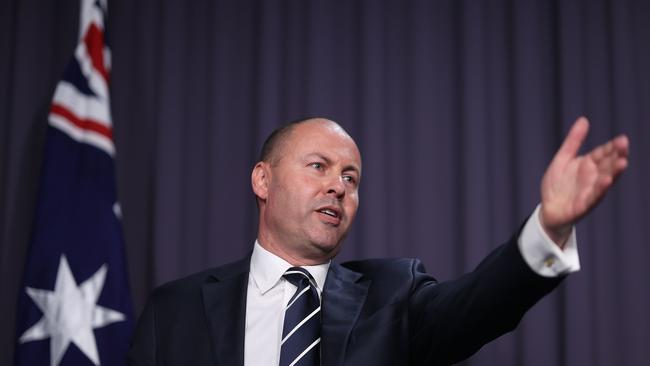MYEFO: Recovery hinges on managing Omicron
The return of targeted lockdowns to control the spread of a new more dangerous or vaccine-resistant Covid-19 variant would cost the economy $20bn over the first six months of next year.

The return of targeted lockdowns to control the spread of a new more dangerous or vaccine-resistant Covid-19 variant would cost the economy $20bn over the first six months of next year, a downside scenario in the federal mid-year budget update shows.
As daily new Covid cases soared in NSW and Victoria, the upbeat economic outlook outlined in Thursday’s mid-year economic and fiscal outlook assumed that the Omicron variant would not “significantly alter current reopening plans or require a reimposition of widespread health and activity restrictions”.
The assumptions underpinning Treasury’s forecasts for blockbuster growth in this and the next financial year also included that the remaining state borders to be lifted by early 2022 – with Western Australia the only holdout – and that international travel would resume as planned.
Treasurer Josh Frydenberg on Thursday said “the expectation in MYEFO is that we’re not going to see Omicron derail the recovery”.
As Mr Frydenberg urged state and territory leaders to show “compassion” and “common sense” in how they respond to the recent jump in Covid cases, Treasury modelled a 1 percentage point penalty to real GDP growth should authorities reimpose “more significant public health responses”.
“In this (downside) scenario, reopening of the international border would be set back by six months,” the MYEFO papers say.
“It is assumed activity restrictions, such as physical distancing and density limits, together with targeted lockdowns, would need to be used to manage the spread of the virus domestically in the first half of 2022.” That would hit consumption as households saved more of their income.
“Prolonged border restrictions would result in a slower recovery in international travel and hamper the recovery in services exports,” the papers say. “Net overseas migration would also be lower, reflecting a slower return of international arrivals.”
Under this gloomier outcome, real GDP growth would be 2.75 per cent in 2021-22, rather than 3.75 per cent, and unemployment would be about 1 percentage point higher than anticipated by the middle of 2022, at 5.5 per cent.
Treasury also modelled a scenario in which the health outcomes matched the baseline forecasts, but where households chose to spend more of the $200bn the RBA estimates has been saved as a result of the pandemic. In this outcome, more migrants return than expected from early 2022.
“Under this scenario, economic activity could increase by around $30bn across 2021-22 and 2022-23, an increase of half a percentage point in 2021-22, and 1 percentage point in 2022-23 compared with the forecasts,” Treasury said.
Mr Frydenberg said Treasury’s analysis showed “how there can be a negative and … a positive impact, depending on how we manage the Omicron variant”.




To join the conversation, please log in. Don't have an account? Register
Join the conversation, you are commenting as Logout